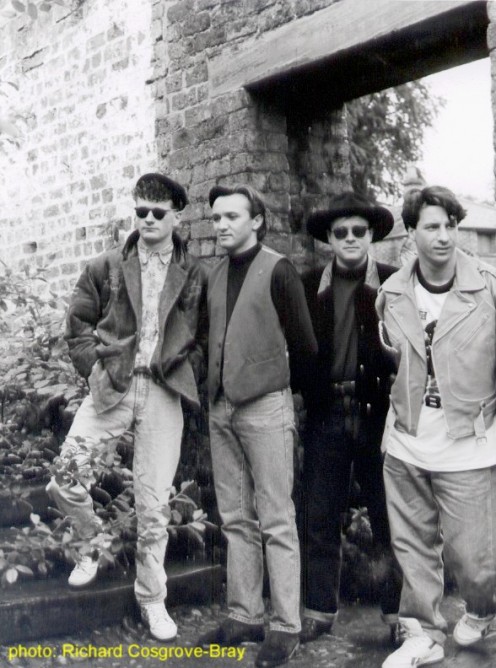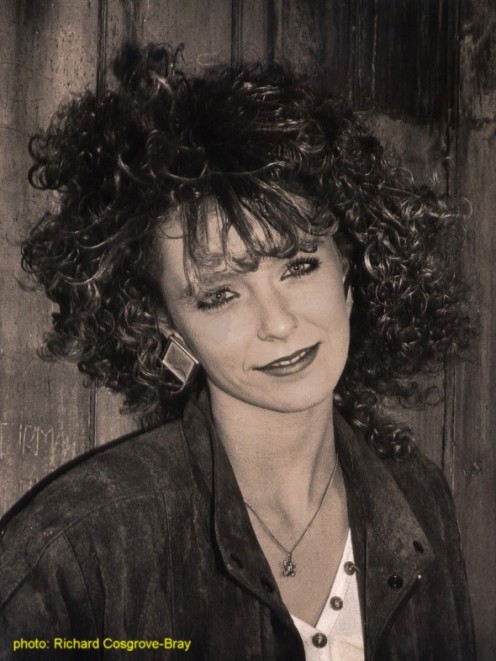How to Improve Portrait Photography
Learn to Look!
There are roughly two types of portrait photography: formal and informal.
Both types will yield much better results if you learn how to take notice what can be seen though the lens.
While speed might be essential with a candid snap shot, on most other occasions if you stop and really look at what's in the view finder before pressing 'click', the end results will be far more pleasing.
For example, an aunt took a photo of my father, intending to immortalise him in his new suit which he wore for a family wedding. The photo certainly did that, but it would have looked rather more impressive if his head had been included in the frame.
While looking through the lens, carefully check what is in or out of the frame.
Stop, Look & Look Again!
Is something blocking or spoiling the image - such as a waste bin, a tree branch apparently growing out of someone's head, or bags and jackets on the floor?
Check your own posture before you take the photo. There's a correct way to hold a camera if you don't have a monopod or tripod with you. Hold the camera with both hands, elbows bent and close to your ribs. Stand straight. Take a deep breath, let it out, and only when your lungs are empty - and your upper torso is therefore still - press the shutter.
And always have spare batteries. (My digital camera eats batteries!)

Framing the Image

Posing the Model
Think of your model's surroundings as a stage set. Props can add or detract from the end result. If in doubt, keep it simple.
Most people want to look as good as possible in photos. Posture, expert makeup and hairstyling, and clever lighting can help this impression enormously. It might be an idea to arrange a salon appointment to coincide with your photo shoot.
Give thought to how your subject looks in the frame. If they're sitting slumped, they'll look fatter in the finished photo. A large nose can be disguised by taking the image straight-on. If your model has a double chin, have them looking up slightly to hide this, or have them pretend to lean their chin on the back of their hand - but without really leaning, otherwise the flesh will squidge out sideways instead.
Capturing Personality
Consider the typical two-year old Little Princess. Dressed in a pretty party frock with gossamer wings on her shoulders, you could pose her on a golden throne, in ballet class, or choose an activity less stereotypical such as a mud-pie making. For the Little Prince, he could be sitting solemnly on a formal chair, engaged in a favourite hobby or posed on his beloved bicycle.
Try to convey something of the child's personality in the image, otherwise you will end up with one of those dull high street studio shots with a bland face floating before a printed backdrop.
Think about the message your photo is trying to convey. People parrot the stale line about not judging from appearances, but photos are all about image. Experimentation with theatrical props, such as masks or historical outfits, can yield interesting results.
Location
A colleague of mine was proudly showing selfies, proud of her new outfit and lovely make-up, but her efforts were ruined as nobody looks glamourous while standing in a cluttered bathroom. Give your location some thought.
With group portraits, take a few minutes to check heights. Shy people end to hide at the back, while the extrovert person grins at the front - and while this may have been the way they instinctively arranged themselves, it is unlikely to look good in a photograph. Make sure the tallest people are at the back, the middle-height ones are in the middle, and the smallest ones are in the front. Have them stand closer together than they naturally would, or try separating all of them completely so they're spaced around the frame of the image. Don't be hesitant to experiment and move people around.
Beware the huge smile! It might seem lively and friendly to the person who's smiling, but fixed forever in a photograph, this quickly becomes wearing. If a photo is to be framed and displayed on a lounge wall, you will find that a small smile is so much easier to live with than a huge, cheesy grin.
Alert to Light!

Light and Shadows
While studio lights might be beyond your budget, you can easily make a light reflector by covering a sheet of stiff card in tin foil. This is portable and really cheap, but works to catch and direct available light. Simply prop it up, or get a buddy to hold it at the most useful angle (found by experimenting on site). Even professional film crews use these from time to time.
Think about what you want to say with your portrait. Do you want a simple, direct image against a particular background? Or do you want to say something about the subjects, to express some facet of their personality? The best photos tend to have element of both.
Moody!
Lighting can be used to create mood. Consider how Hammer Films used deep shadows to give a Gothic atmosphere on their sets. The angle of light can sharpen or soften textures, also. Your choice will depend on the kind of portrait you're trying to make.
With a conventional facial portrait of a woman, a soft focus lens is often used to flatter skin tone. Another person might prefer a 'warts-and-all' approach. Again, it will depend on what you're trying to do - and on whether the photography is driven by the aesthetic interests of the photographer or by commercial demands.

The Camera Never Lies?

The two photos directly above use the same model, wearing the same clothes, but look at how different the images are from each other. One is an attractive, informal portrait, the other seems to be gritty photojournalism.
The comparison of these two images demonstrate how pose, framing and location can completely alter the message conveyed by photography.
The camera never lies? Oh yes it does, all the time.
Most (if not all) glossy media images have been manipulated on computer. Necks are made longer, pudgy chins and stomachs are smoothed away, thighs are lengthened, shadows or blemishes made to disappear.
Twisting Tales
Newspapers out to make a celebrity or politician look as bad as possible will use the worst available photo of that person, usually with an unfortunate facial expression or pose. Shadows are deepened, the image made more grainy. It's easier to make someone look awful than it is to make them look good.
A clever choice of location can give the illusion of a bigger and more dramatic story. Many a newspaper headline about flooding is accompanied of a photo of a car driving through a deep puddle. The intention is to illustrate how bad the flooding is, but I've seen many urban photos of this kind with people in the background who are standing on dry land.
But you can use the ability to manipulate impressions to great advantage. Experiment with the ideas mentioned in this article to create interesting and imaginative quality portraits. You can produce portraits which make a person look gorgeous, mysterious, formal or bizarre.
And most important of all - have fun with it!
- More Liverpool Photos
Many of the places photographed by Richard Cosgrove-Bray no longer exist...
© 2009 Adele Cosgrove-Bray








